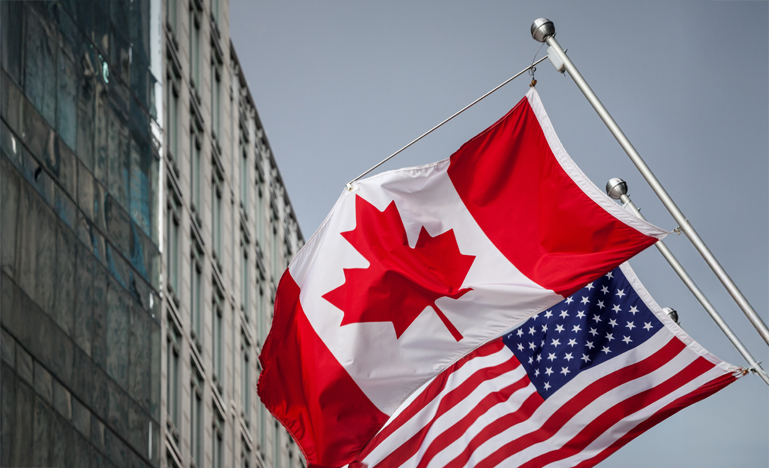Judicial oversight of executive power
How do we decide whether executive actions are permitted in Canada and the United States?

After many years of operation under the Chevron doctrine, the United States Supreme Court ruled to overturn Chevron in the 2024 Loper Bright Enterprises v. Raimondo and Relentless, Inc. v. U.S. Department of Commerce (Loper Bright) decision.
At the heart of these cases was whether uncontrolled regulation by government agencies and their unelected leaders empowers an undemocratic administrative state. Chevron’s critics contended that it “require[d] judges to abdicate their responsibility to interpret the law.”
Canada and the United States have grappled with who decides and on what basis if executive actions, e.g., imposing tariffs, ministerial orders, or tribunal decisions, are permitted—the courts or the executive branch itself, which made the order or decision in the first place. Two seminal decisions in Canada and the United States set the rules: Vavilov and Loper Bright. We see some convergence. Courts have the authority to interpret the law—something within their expertise and arguably not where courts should be required to defer to the statutory interpretations of the executive branches of government. As stated in Loper Bright: “… agencies have no special competence in resolving statutory ambiguities.” In Canada, determining if the law was applied correctly is also within the court’s bailiwick.
Judicial review seeks to address the underlying tension between preserving the rule of law and the foundational democratic principle, which finds expression in the initiatives of Parliament, Congress, and legislatures to create executive authorities, including administrative bodies, and grant them broad powers to execute their delegated mandates.
Canada and the United States have grappled with balancing court oversight of executive, administrative, or agency decision-making and when to grant the appropriate level of deference. In Canada, under the Vavilov framework, the presumption of a reasonableness review (which implies a certain level of deference to executive or tribunal decision-making) applies when a court decides to uphold or overturn (quash) an administrative decision. The presumption of reasonableness can be rebutted in two instances, and a correctness standard (no deference) will apply: first, when the legislature indicates that a correctness standard applies or provides for a statutory appeal mechanism; and second, where the rule of law requires it, such as for constitutional questions, general questions of law of central importance to the legal system as a whole, and questions related to the jurisdictional boundaries between two or more administrative bodies.
More in line with Canadian jurisprudence when a correctness standard applies, the Loper Bright decision, in overturning Chevron, directed the courts to exercise their independent judgment in deciding whether an agency had acted within its statutory authority—paying careful attention to the executive branch’s judgment, although not deferring to an agency’s interpretation of the law because a statute was ambiguous. The United States jurisprudence preserves the rule of law respecting the agencies’ delegated authority while ensuring that the agencies act within it.
Unlike under Loper Bright, where the court only must pay careful attention to the executive branch’s judgment, under Vavilov, when a reasonableness standard applies, Canadian courts must decide if a decision is based on an internally coherent and rational analysis chain. Is it justified in relation to the facts and laws constraining the decision-maker? If yes, the Canadian courts, under the reasonableness standard, defer to such an executive branch decision. A court applying the reasonableness standard does not ask what decision it would have made in place of that of the administrative decision-maker, attempt to ascertain the range of possible conclusions open to the decision-maker, conduct a de novo analysis, or try to determine the “correct” solution to the problem.
What do we consider where the United States courts must decide if a statute authorizes the challenged agency action? Instead of the earlier Chevron concept of a “permissible” reading of an ambiguous statute, Loper Bright sets forth an approach of a “best” reading to resolve ambiguity. This “best” reading is what a court would have reached if no agency were involved after applying all relevant interpretative tools. Loper Bright, in this instance, is in line with Vavilov when the default standard of reasonableness does not apply and instead the standard of correctness applies. A correctness standard also requires a de novo review in Canada, and the court also does not defer to the administrative decision-maker when the correctness standard applies.
There is a constant struggle to balance upholding the rule of law and deferring to administrative decision-makers to implement policy objectives. However, when the executive branch interprets the scope of its authority under legislation, the courts in Canada and the United States interpret whether the law granted it the authority it claims to have acted upon. This strikes a balance between the executive branch and the judiciary—the executive branch executes, but courts decide if they followed the rule of law when they executed based on the law they rely on, which they say granted them the authority to act. This is an important check and balance to ensure no overreach of executive action.




